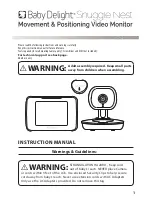
7
• People with disabilities, activity limitations, or who
are physically frail, should be assisted by another
person when using this unit.
• Proper cuff size is important for accurate measure-
ments. Only use the device on adults who have the
right upper arm circumference for this instrument.
See section ’12. Specifications’ for suitable upper
arm circumferences.
• Do not use any cuffs, tubes, parts and accessor-
ies other than those explicitly recommended by
the manufacturer for use with this product. Parts
and accessories not approved for use with the de-
vice may cause damage to your health and to the
product.
• Electromagnetic interference: Avoid strong elec-
trical or electromagnetic fields in the direct vicinity
of the device (e.g. mobile telephones, microwave
ovens) while it is in operation, as inaccurate meas-
urements may result. To prevent such interference,
use the unit at a sufficient distance from such de-
vices or turn the devices off.
• The blood pressure monitor must not be used in
connection with a high-frequency surgical unit.
• Do not measure your blood pressure while oper-
ating a vehicle or in any situation which requires
your full attention.
• During the blood pressure measurement, blood
circulation must not be stopped for an unneces-
sarily long time. If the device malfunctions, remove
the cuff from the arm.
• Avoid any mechanical restriction, compression or
bending of the cuff line.
• Do not allow sustained pressure in the cuff or fre-
quent measurements. The resulting restriction of
the blood flow may cause injury.
• Ensure that the cuff is not placed on an arm in
which the arteries or veins are undergoing medical
treatment, e.g. intravascular access or therapy, or
an arteriovenous (AV) shunt.
• Do not use the cuff on people who have undergone
a mastectomy.
CAUTION:
• The device should not be used when your arm has
been wounded/injured or when a catheter has been
inserted. Such use may result in injury.








































